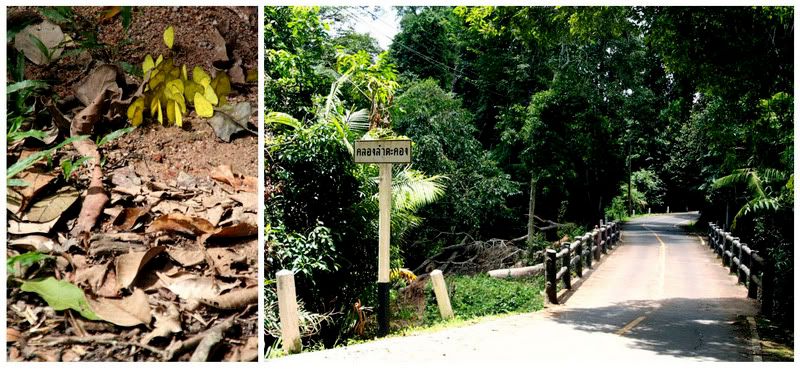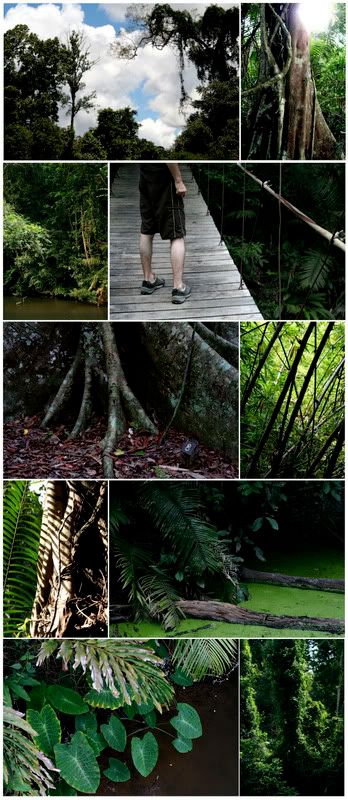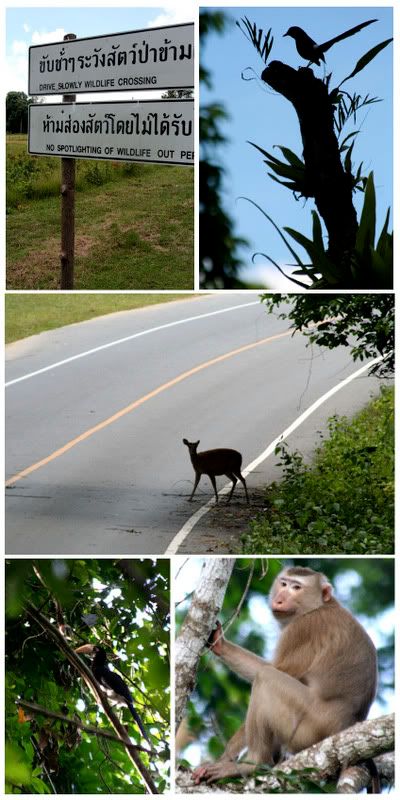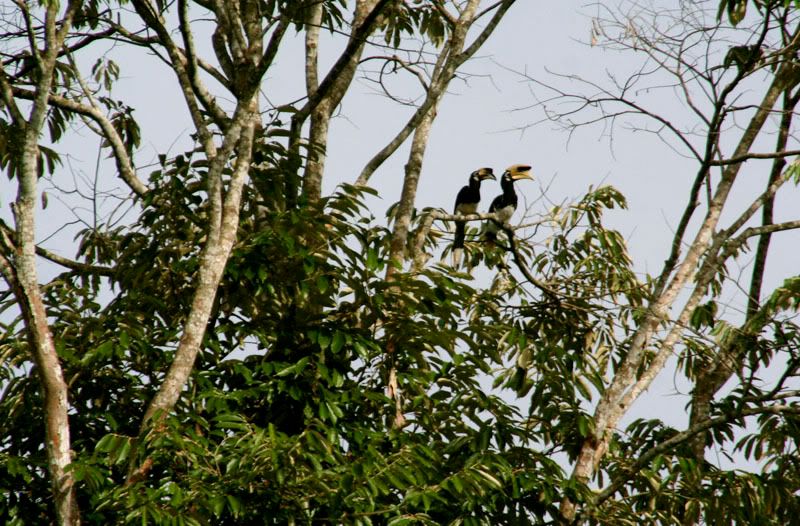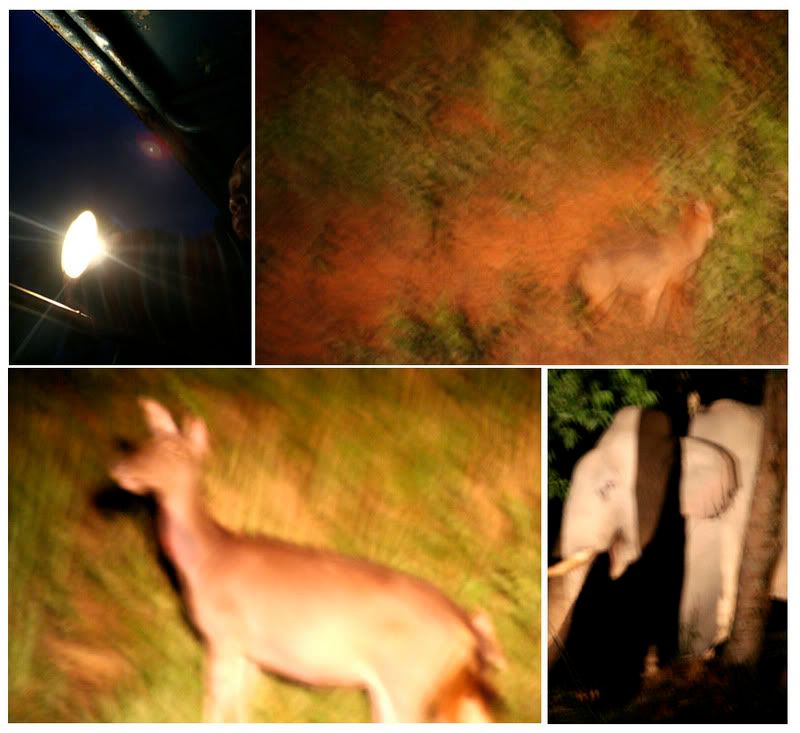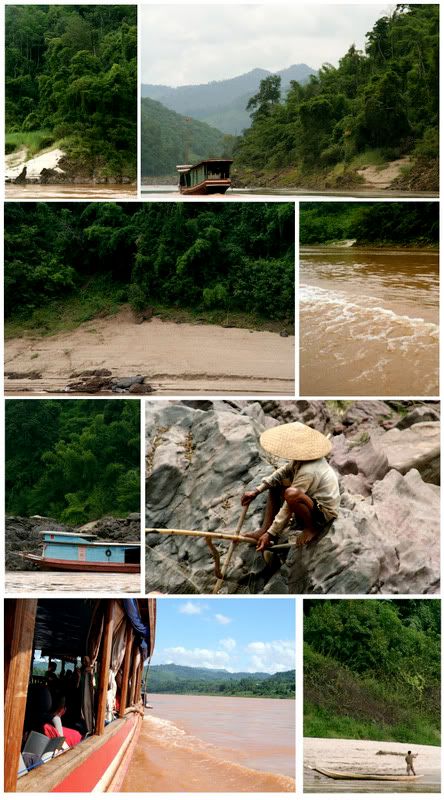 Tropical waterways have always held a mysterious fascination for me. So though I was excited to be visiting Laos for the first time, I was even more excited by being able to travel by down the Mekong, the largest river in Southeast Asia.
Tropical waterways have always held a mysterious fascination for me. So though I was excited to be visiting Laos for the first time, I was even more excited by being able to travel by down the Mekong, the largest river in Southeast Asia.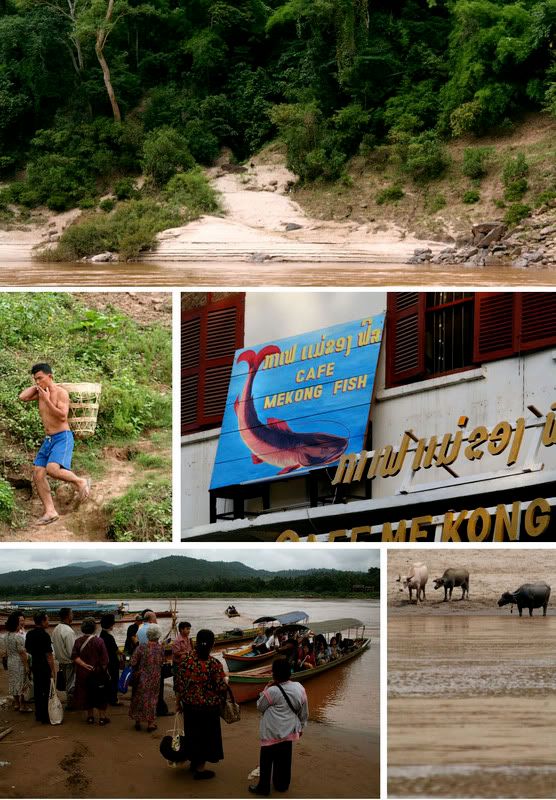 My first sighting of the river was in darkness, as Bordeaux and I sat down for dinner on our last night in Thailand. It appeared as solid darkness, a non-form breaking up the edge of Thailand and the distant twinkling lights of Laos. We drank our last Chang over it, sipping away our beer as the river silently slipped past.
My first sighting of the river was in darkness, as Bordeaux and I sat down for dinner on our last night in Thailand. It appeared as solid darkness, a non-form breaking up the edge of Thailand and the distant twinkling lights of Laos. We drank our last Chang over it, sipping away our beer as the river silently slipped past.I saw the Mekong properly as we came down for breakfast the next morning- a thick, muddy river being scratched by the early morning activities of ferries and canoes. After taking a small wooden ferry across the Thai-Laos border, we got our passports stamped and bought our tickets for the two-day slowboat down to Louang Phabang. We waited for the slowboat outside a convenience store, where we were joined by several English students on their gap year, a young French couple, and a loud, obnoxious Australian, who wore green crocs and a loose tank-top that showed off his grey back-hair.
 After clearing our passports again, we were allowed to board ship. The slowboat is a strange vessel, appearing almost like the first floor of a wooden shophouse, painted brightly and set to float on the water. In the front of the boat was a short curving deck, on which sat a pile of cargo, a small dog, and a garden of potted plants. Once onboard, we found that most of the space had already been taken, and we were forced to sit uncomfortably on one of the few wooden benches left. The English gap students sat in front of us, joined now by an awkward Scandinavian. As the boat continued to fill up, passengers were forced to squeeze in, sit on the floor, or pile in with the luggage. Despite the fact that we were already packed full, more tourists kept appearing on the dock, and the transport officials kept insisted that there was only going to be one boat. Somehow the seating arrangement around us shifted, and suddenly the obnoxious Australian was sitting two rows ahead of us, doing his best to charm the group of eighteen-year-old British girls. It was too much to have to share the company of the Mekong with such an annoying person, and I numbly accepted that this was going to be a miserable seven hours. Another slowboat drifted up next to us, and it became clear that another boat was going to be making the trip. I shoved my backpack to Bordeaux. "Go get us space on that boat- I'll get our luggage."
After clearing our passports again, we were allowed to board ship. The slowboat is a strange vessel, appearing almost like the first floor of a wooden shophouse, painted brightly and set to float on the water. In the front of the boat was a short curving deck, on which sat a pile of cargo, a small dog, and a garden of potted plants. Once onboard, we found that most of the space had already been taken, and we were forced to sit uncomfortably on one of the few wooden benches left. The English gap students sat in front of us, joined now by an awkward Scandinavian. As the boat continued to fill up, passengers were forced to squeeze in, sit on the floor, or pile in with the luggage. Despite the fact that we were already packed full, more tourists kept appearing on the dock, and the transport officials kept insisted that there was only going to be one boat. Somehow the seating arrangement around us shifted, and suddenly the obnoxious Australian was sitting two rows ahead of us, doing his best to charm the group of eighteen-year-old British girls. It was too much to have to share the company of the Mekong with such an annoying person, and I numbly accepted that this was going to be a miserable seven hours. Another slowboat drifted up next to us, and it became clear that another boat was going to be making the trip. I shoved my backpack to Bordeaux. "Go get us space on that boat- I'll get our luggage." He managed to reserve a nice stretch of the floor for us- once lined with cushions it became a comfortable place to stretch out and relax. We spent our first day relaxing, reading or leaning back against the side of the boat to nap. We drank warm beer Lao, a toast to our trip on the mekong. Occasionally I stood to enjoy the view- the farmed green hills around Houayxai gave way to a massive wall of jungle, which rose above us on either side of the smooth brown river. Occasionally a white sand beach or an island of craggy rocks would interrupt the green and brown monotony.
He managed to reserve a nice stretch of the floor for us- once lined with cushions it became a comfortable place to stretch out and relax. We spent our first day relaxing, reading or leaning back against the side of the boat to nap. We drank warm beer Lao, a toast to our trip on the mekong. Occasionally I stood to enjoy the view- the farmed green hills around Houayxai gave way to a massive wall of jungle, which rose above us on either side of the smooth brown river. Occasionally a white sand beach or an island of craggy rocks would interrupt the green and brown monotony.We spent that night in Pakbeng, a small river town whose main function is sheltering travels in between legs of the journey. The first hotel we checked into, recommended by the increasingly failing Rough Guide to Laos, was a pile of concrete and bamboo boxes that seemed likely to slip into the river. The room was tatty, with ragged bedsheets over a twisted mattress. The hotel was noisy and crowded, mainly filled up with gap-year students who likely had the same Rough Guide as us. Taking the guidebook's word that this was one of the best places in town we consigned ourselves to the room, and went to take a shower. Once the florescent light flicked on, we realized that our bathroom was connected to the next hotel room, the two being divided by a low cinderblock wall. When we realized that the shower didn't work, we asked to switch rooms. The manager showed me another room- I checked the shower, and found that it worked, but to the effect that the shower-head flew off any time we turned on the water. I asked to see another room, but they insisted they were full- though as Bordeaux and I got our bags and left, they suddenly seemed to have another room to show us. We found a much nicer hotel across the street for the same price. The room was cleaner, with new tile floors, white walls, and clean crisp sheets and towels- and incredibly, the shower worked perfectly.
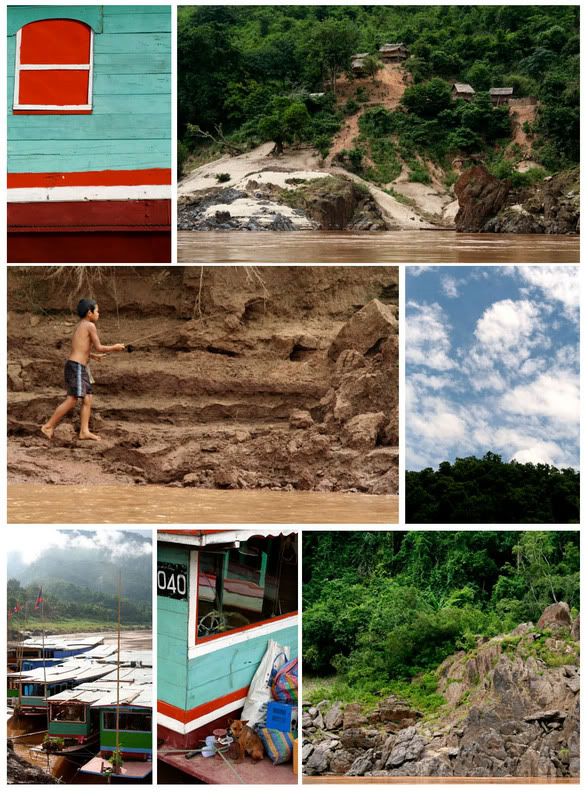 The next day we woke early to secure two of the slowboat's very limited comfortable seats, which seemed to have been lifted out of minivans and screwed into the wooden floor. The journey on the second day was even more incredible, as we were now able to enjoy the view. In the early part of the day the river was thin- a slim channel of coffee-colored water passing between the forest, which rose 200 feet on either side of us. The jungle was lush and green, with huge leafy vines swallowing up entire trees. Where there was a break in the greenery it appeared as a wound in the forest, with bleached white tree trunk skeleton showing through. From within the thicket came the whining siren-buzz of insects, the labored breathing of the forest itself. The immensity of the jungle was overwhelming, and any canoes or boats that passed near the shore looked ridiculously out of proportion, appearing tiny before the immensely overgrown jungle. Occasionally the forest would relent, breaking open to show a small village of bamboo houses and sheet-metal roofs. Sometimes we would stop at these villages to pick up cargo or passengers. Most other times we drifted by without acknowledging the town at all, and the fishermen and water buffalo that we passed appeared to us simply as silent vignettes of rural Lao life.
The next day we woke early to secure two of the slowboat's very limited comfortable seats, which seemed to have been lifted out of minivans and screwed into the wooden floor. The journey on the second day was even more incredible, as we were now able to enjoy the view. In the early part of the day the river was thin- a slim channel of coffee-colored water passing between the forest, which rose 200 feet on either side of us. The jungle was lush and green, with huge leafy vines swallowing up entire trees. Where there was a break in the greenery it appeared as a wound in the forest, with bleached white tree trunk skeleton showing through. From within the thicket came the whining siren-buzz of insects, the labored breathing of the forest itself. The immensity of the jungle was overwhelming, and any canoes or boats that passed near the shore looked ridiculously out of proportion, appearing tiny before the immensely overgrown jungle. Occasionally the forest would relent, breaking open to show a small village of bamboo houses and sheet-metal roofs. Sometimes we would stop at these villages to pick up cargo or passengers. Most other times we drifted by without acknowledging the town at all, and the fishermen and water buffalo that we passed appeared to us simply as silent vignettes of rural Lao life.







